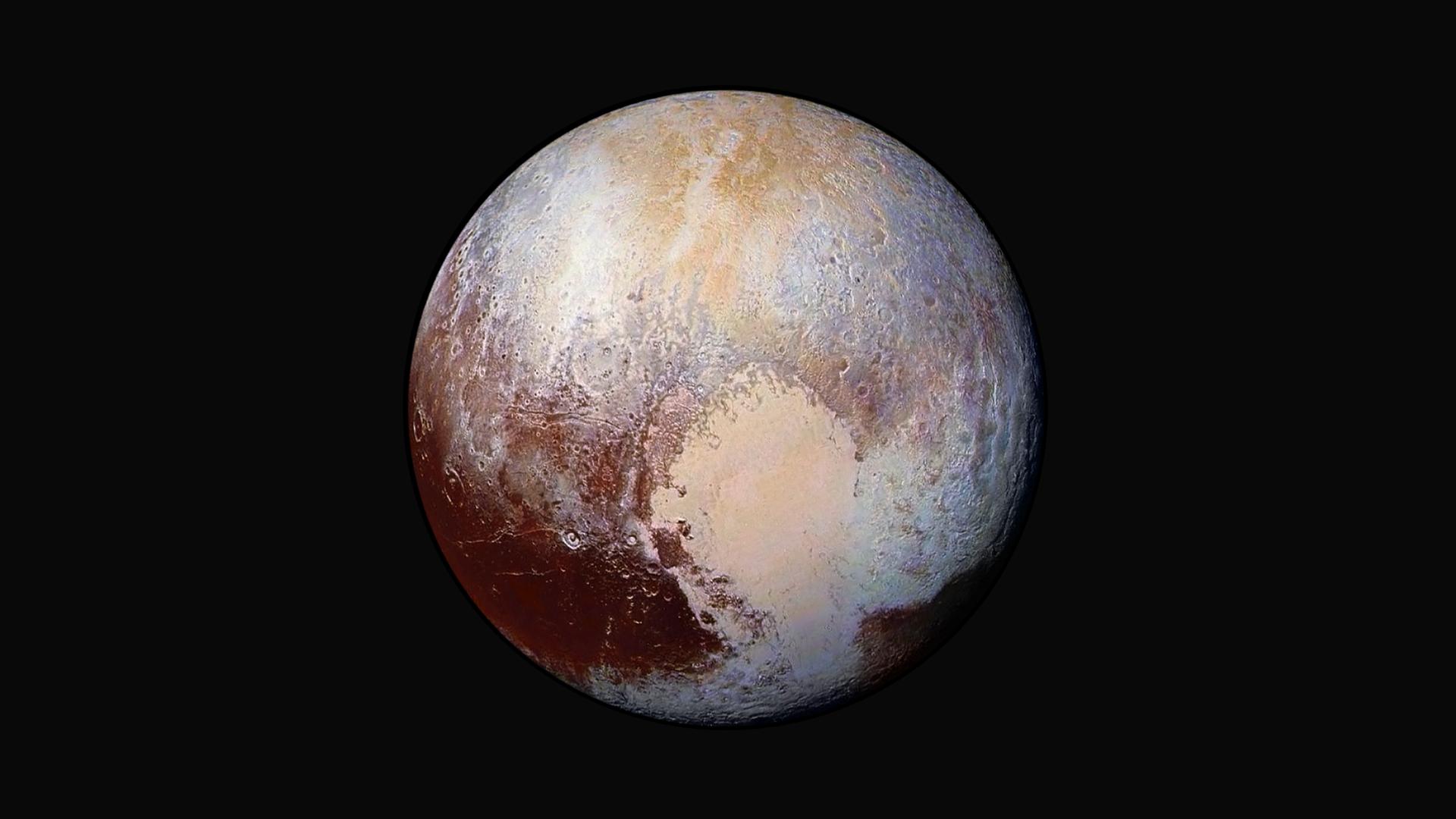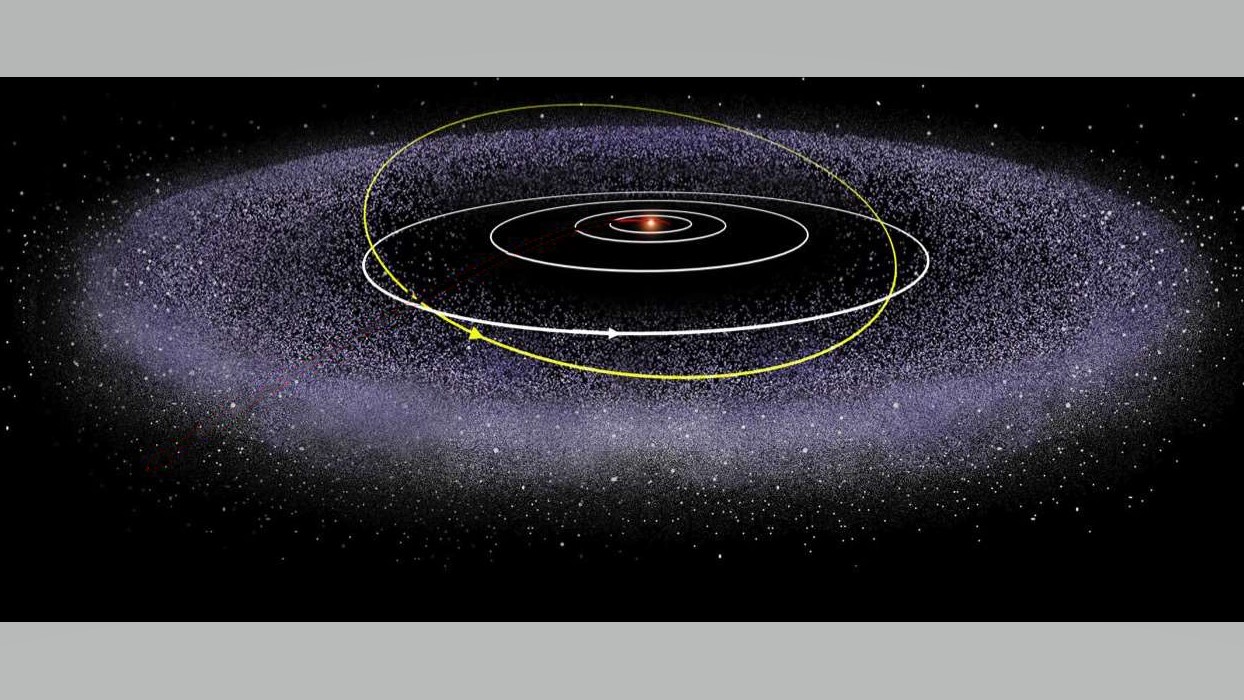How Pluto walks a tightrope between a stable and chaotic orbit
Pluto's continued existence owes much to the gravity of Jupiter and Neptune.

Pluto is lucky to exist in the orbit that it does, according to new computer simulations that show how the dwarf planet skirts near a chaotic orbit that could potentially destroy the beloved world.
The former ninth planet, now considered a dwarf planet, has an unusual orbit that is highly elongated and tilted with respect to the orbits of the planets. For 20 years of its 248-year journey around the sun, Pluto actually moves inside Neptune's orbit. That they never collide is a consequence of two properties of Pluto's orbit, known as azimuthal libration and latitude libration.
Azimuthal libration describes how, whenever Pluto crosses Neptune's orbit, it is always at least 90 degrees away from Neptune. Meanwhile, latitude libration ensures that when Pluto reaches its closest point to Neptune or the other giant planets, it is always high above them and the plane of the solar system. Combined, these two factors keep Pluto out of harm's way.
Related: The most amazing photos from NASA's New Horizons
Now planetary scientists Renu Malhotra of the Lunar and Planetary Laboratory at the University of Arizona and Takashi Ito of the National Astronomical Observatory of Japan have developed a greater understanding of why Pluto survives in this particular orbit.
In computer simulations they found that Neptune, unsurprisingly, has the greatest influence on Pluto's azimuthal libration, a consequence of the two planets' 3:2 orbital resonance, which dictates that for every three times Neptune orbits the sun, Pluto orbits exactly twice. However, the simulations suggest that Neptune does not greatly influence Pluto's latitudinal libration.
Throw the gravity of Uranus into the mix, and things take a downturn — Uranus acts to destabilize both the azimuthal and latitudinal constraints. If Pluto's orbit were a consequence of the effects of just these two planets, it would have become unstable after just tens or hundreds of millions of years, resulting in Pluto either colliding with Neptune, — or more likely — being ejected out of the solar system entirely.
Get the Space.com Newsletter
Breaking space news, the latest updates on rocket launches, skywatching events and more!

It's Jupiter, and to a lesser degree Saturn, that come to Pluto's rescue. Despite being farther from Pluto than Neptune and Uranus, their gravity is so great that they can still dominate. Jupiter alone provides sufficient gravitational influence to keep Pluto's orbit stable for at least 5 billion years — the length of time that the simulations ran for.
What's striking about this new work is how narrow this zone of stability is for Pluto, and how the dwarf planet has only been able to achieve it thanks to the chance arrangement of planets in the solar system.
The findings also have consequences for objects in similar orbits to Pluto's that also have a 3:2 resonance with Neptune. Since the orbits of various populations of small objects in the Kuiper Belt beyond Neptune retain the imprint of how they were pushed around by the migrating gas giants in the early days of the solar system, they provide a unique window into the history of the solar system. Their orbits could potentially hide evidence for the existence of lost planets that were ejected from the Solar System billions of years ago, say Malhotra and Ito.
The results were published on March 31 in Proceedings of the National Academy of Sciences.
Follow Keith Cooper on Twitter @21stCenturySETI. Follow us on Twitter @Spacedotcom and on Facebook.
Join our Space Forums to keep talking space on the latest missions, night sky and more! And if you have a news tip, correction or comment, let us know at: community@space.com.

Keith Cooper is a freelance science journalist and editor in the United Kingdom, and has a degree in physics and astrophysics from the University of Manchester. He's the author of "The Contact Paradox: Challenging Our Assumptions in the Search for Extraterrestrial Intelligence" (Bloomsbury Sigma, 2020) and has written articles on astronomy, space, physics and astrobiology for a multitude of magazines and websites.









